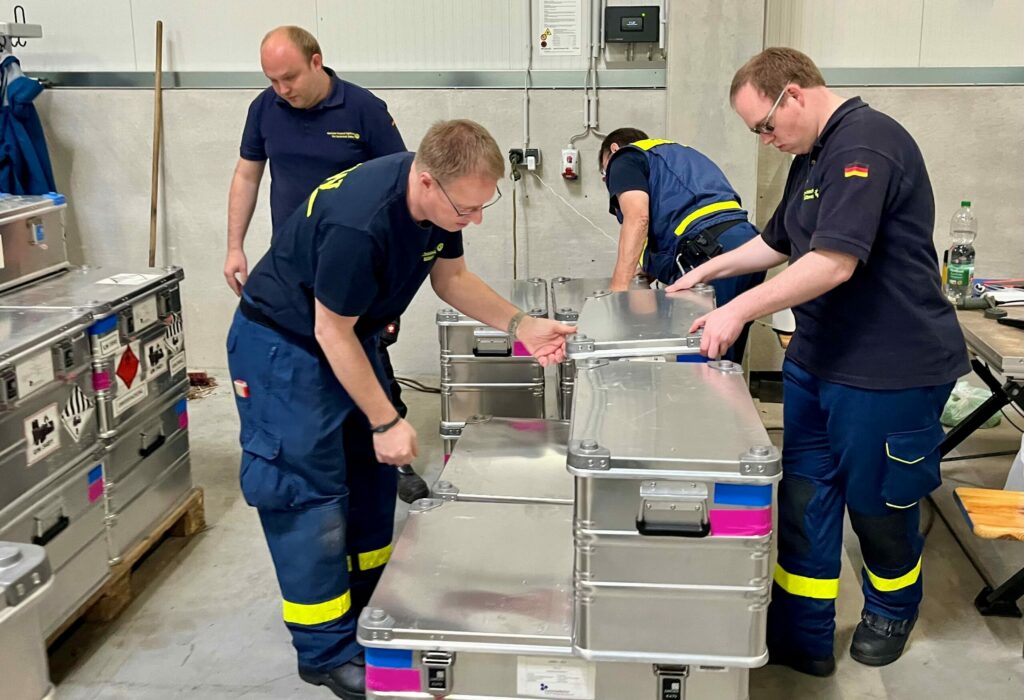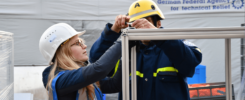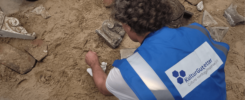On 10 and 11 June, THW forces checked and stored for the Cultural Heritage Response Unit (CHRU) of the KulturGutRetter project at the logistics centre in Hilden.
When cultural heritage is threatened by a disaster, it is important to deploy specialists and materials quickly and smoothly. In order for the CHRU 2025 to be ready, the KulturGutRetter project is currently preparing the necessary logistics. In the event of a disaster relief operation, the mobile conservation laboratory of KulturGutRetter, as well as IT equipment, surveying devices and other equipment must be able to be transported from the logistics centre Hilden in Nordrhein-Westfalen to an international disaster site within the shortest possible time. A good logistical infrastructure and preparation are necessary. As one of the partners of KulturGutRetter, the Federal Agency for Technical Relief (THW) is responsible for the logistics concept of the unit. Together with the German Archaeological Institute (DAI) and the Leibniz Centre for Archeology (LEIZA), concepts are being developed to ensure quick assistance for threatened cultural heritage abroad. In matters of logistics and infrastructure, the CHRU can rely on the operational expertise of the THW.

The mobile emergency conservation laboratory of KulturGutRetter was picked up by THW personnel from LEIZA in Mainz on 10 June and transported to the THW logistics centre in Hilden. During the two-day assignment, involving four THW employees from the THW management and the logistics centre in Hilden (LogZ) as well as three operational personnel, the CHRU equipment was prepared for a possible deployment and properly stored in the Logistics Centre in Hilden.
Equipment for rapid response
The mobile emergency laboratory, developed by LEIZA, has been specially adapted to the needs of an international mission and is packed in standardized aluminum boxes that can be shipped as an air cargo to the disaster site. The laboratory consists of modular tables designed for wet and dry cleaning, packaging and documentation of mobile cultural goods. The equipment for the damage assessment and emergency conservation of damaged historical monuments is also stored in such boxes. Volunteer experts on immovable cultural heritage have the most important equipment and material at hand to act quickly. In the event of a disaster relief operation in 2025, it is now possible to dispatch material and equipment to protect endangered cultural heritage. In future, it is planned that the Cultural Heritage Response Unit will also be registered with UCPM, the EU’s disaster protection mechanism. The German Federal Foreign Office supports the KulturGutRetter project.

